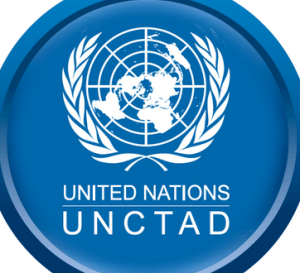In the midst of COVID-19 global trade remained strong – UNCTAD
 The ripples of the COVID-19 has continued to hit economies of the world, even though economies have remained optimistic over time. A recent update from the United Nations Conference on Trade and Development (UNCTAD) shows that despite the impact of the pandemic, global trade has remained strong.
The ripples of the COVID-19 has continued to hit economies of the world, even though economies have remained optimistic over time. A recent update from the United Nations Conference on Trade and Development (UNCTAD) shows that despite the impact of the pandemic, global trade has remained strong.
While projecting that global trade is expected to reach about $28 trillion in 2021, indicating an increase of 11 per cent relative to pre-pandemic levels, it notes that trade growth stabilized during the second half of 2021, increasing by about 1 per cent quarter-over-quarter, adding that the outlook for 2022 remains very uncertain.
According to the update for November issued today, UNCTAD says global trade growth remained strong during 2021.
The update indicates that the value of global trade in goods continued to increase during each quarter of 2021, even though, the recovery has been more muted for trade in services, which remains below its levels of 2019.
“Although global trade is stabilizing, quarter-over-quarter trade growth was still positive in third quarter 2021,” it said.
The update notes further that the value of global trade in goods and services added about one per cent to the already high level of the previous quarter.
“Global trade growth was about 24 per cent in third quarter 2021, on a year-over-year basis, significantly higher than pre-pandemic levels, with an increase of about 13 per cent relative to third quarter 2019. Valued at about $5.6 trillion, the global trade in goods set a new all-time record in third quarter 2021. Trade in services stood at about $1.5 trillion,” the update said.
It states that the quarter-over-quarter growth of trade in goods was about 0.7 per cent, while that of services was about 2.5 per cent. On a year-over-year basis, the trade growth rate for goods remains substantially higher than for services (22 per cent vs 6 per cent). Both the trend of a slower growth for the trade in goods, as well as a more positive trend for services, will probably continue in fourth quarter 2021. Trade in goods is expected to remain constant at about $5.6 trillion in fourth 2021, while the trade in services will likely continue to slowly recover, it added.
It indicated that overall, 2021 is set to be a strong year for international trade as the value of global trade in goods and services is expected to increase by about $5.2 trillion relative to 2020, and by about $2.8 trillion relative to 2019, the equivalent of an increase of about 23 per cent and 11 per cent, respectively. Trade in goods is also projected to reach a record level of $22 trillion in 2021. Trade in services should be valued about $6 trillion in 2021, still slightly below its pre-pandemic level.
It puts the reason for the positive trend for international trade in 2021 as largely due to the result of the strong recovery in demand due to subsiding pandemic restrictions, economic stimulus packages, and increases in commodity prices.
However, it notes that the forecast for 2022 remains very uncertain due to several factors including: Slowing economic recovery. The strong economic recovery of the first half of 2021 has slowed during the second half of 2021. In particular, economic growth of China in third quarter 2021 was below expectations and lower than in previous quarters; Lower than expected economic growth rates are generally reflected in more downcast global trade trends; Rising commodity prices and inflationary pressures may also negatively affect economic prospects and international trade flows; In addition, many economies, including those in the European Union, continue to face COVID-19 related disruptions. These disruptions may negatively affect consumers’ demand and ultimately be reflected in trade statistics for the upcoming quarters, it added.
Disruptions of logistic networks and increases in shipping costs. The recovery of 2021, it adds, has been marked by large and unpredictable swings in demand, which have resulted in an increased stress on supply chains.
The update notes that logistic disruptions and high fuel prices have further contributed to supply shortages and spiraling shipping costs. In particular, the backlogs across major supply chain hubs that have characterized most of 2021 could continue into 2022 and therefore negatively affect trade and reshape trade flows across the world.
According to the update, the implementation of regional trade agreements, such as the African Continental Free Trade Area and the Regional Comprehensive Economic Partnership, is expected to influence global trade patterns.
Regional trade within Africa and within the Asia-Pacific area is expected to increase, but also by diverting trade away from other routes, it said, adding that governments are becoming increasingly supportive of domestic socio-economic and strategic goals.
By Emmanuel K. Dogbevi
Copyright ©2021 by NewsBridge Africa
All rights reserved. This article or any portion thereof may not be reproduced or used in any manner whatsoever without the express written permission of the publisher except for the use of brief quotations in reviews.
